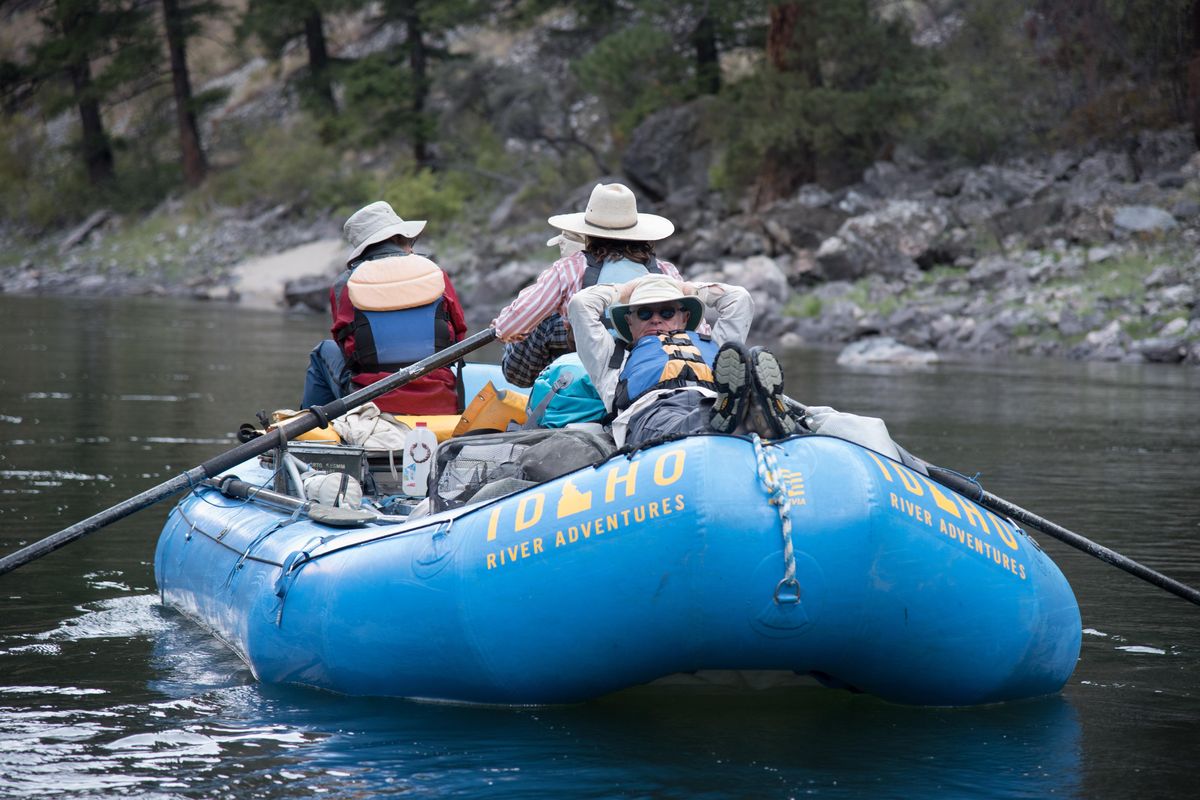Lots of winter snow means great summer flows on rivers throughout Idaho

A solid snowpack in Idaho has river guides hoping for a good 2019 season.
But the next few weeks will prove decisive in determining that, said Peter Grubb, the co-founder and owner of ROW Adventures based in Coeur d’Alene.
“The best-case scenario for us is that the rest of April is kind of cool that we don’t get temperatures over 70,” he said. “The longer that lasts, (the more) your snowpack will actually go up. Not because there is more snow, but because less of it’s melting.”
Lower-level snow means the ground is saturated, which helps summer flows in two ways, Grubb said. First, it means that melting snowpack runs into the river and doesn’t soak into the earth.
It also replenishes the water table, which means that springs and streams will feed into larger rivers later into the summer.
“Really, what it boils down to is what kind of weather we have in the next six weeks,” Grubb said.
ROW runs trips on the Middle Fork of the Salmon River, the Salmon River, the Snake River, the St. Joe, Lochsa and Bruneau rivers among others (see sidebar).
Snowpack in the Salmon Basin was 111 percent of normal; the Lochsa River Basin 93 percent of normal; the Owyhee 130 percent of normal and the Bruneau 121 percent of normal as of last week.
Ron Abramovich, water supply specialist for NRCS Snow Survey in Idaho, told the Idaho Outfitters and Guides Association that “all of the snow is going to provide a great runoff season,” according to a press release.
Dustin Aherin, the owner of Idaho River Adventures, agreed, although he emphasized that much can change in the next month or so.
“It is looking to be a perfect river season at this point, though the next six weeks will really be the deciding factor in that,” he said in an email. “The snowpack in the Salmon River drainage is just above normal, a great spot to be. This should mean a fun start to the river season in late May/June with fun whitewater, then a good water year throughout the remainder of the summer with the flow hopefully not getting too terribly low.”
Aside from running the river, the above-average snowpack is good for cold water fisheries on the Salmon and Clearwater drainages. Aherin said that will keep “the river temps cool enough to be healthy for the native Westslope cutthroat we fish for on the Middle Fork Salmon as well as the wild steelhead and salmon that will be migrating as smolts to the ocean as well as the adults returning to spawn later in the summer.”

Rafting companies watch the weather avidly. Too much snow can make rivers dangerous.
“We do cancel trips when it’s necessary,” Grubb said.
Predicting how a river, or particular section of river, will behave involves science and educated guessing. For instance, Grubb said, a particularly hot Thursday or Friday could force the cancellation of a weekend Lochsa trip. That’s because flows spike 24 or 48 hours after a heat event melts higher-mountain snow enters the system.
“It can be really volatile,” he said.
In addition to the normal unpredictably of weather, a changing climate has added layers of uncertainty. During California’s seven-year drought, which ended this year, many river guide services had to stop running popular rivers like the Kern because there wasn’t enough water.
As in Washington, a warming climate in Idaho will mean less snowpack, faster runoff events and lower, warmer rivers and streams during the hottest summer months.
Between 1971 and 2005 the average annual temperature increase in the Snake River Plain was 1.4 degrees Celsius, according to a 2011 Boise State University study.
Like with most things climate change related the effects aren’t necessarily clear cut for those on the ground. Aherin, who has been guiding trips on the Middle Fork of the Salmon for decades, said he hasn’t seen climate change impact the river season in one consistent way.
Instead, he said, “15 years ago, we kind of had this ability to say this is predictable and typical weather on the Middle Fork. Honestly, you can’t do that anymore. It’s climate change is what it is.”